
Ticket to Ride: Frank and Mary Grace Stitch Head West to Hawaii
When we took delivery of our new HH55 catamaran Ticket to Ride in January 2019, we had big plans to sail south and southwest from California to Mexico and on to French Polynesia. We joined the 2019 Baja Ha-Ha, and had a great time working our way south with the rally fleet. Afterward, we went on to explore parts of Mexico while planning and provisioning for our passage and yearlong stay in French Polynesia. Three days before our departure from Mexico, borders began closing due to COVID-19.
After much consideration, we chose to turn our bows westward and sail to Hawaii until this “little crisis” was contained. We had no idea that nearly one year later we would still be sailing the Hawaiian Islands, and that borders around the world would continue to be closed!
Hawaii was not even Plan B to our original sailing schedule. We had heard it’s a difficult place to cruise because comfortable, year-round anchorages are hard to find, and the welcome for boaters was underwhelming. While it is true that the conditions of anchorages change during the seasons, and finding a comfortable place to anchor can be a challenge, we have found the people here to be very welcoming, and we have made an unusual number of “land friends.”
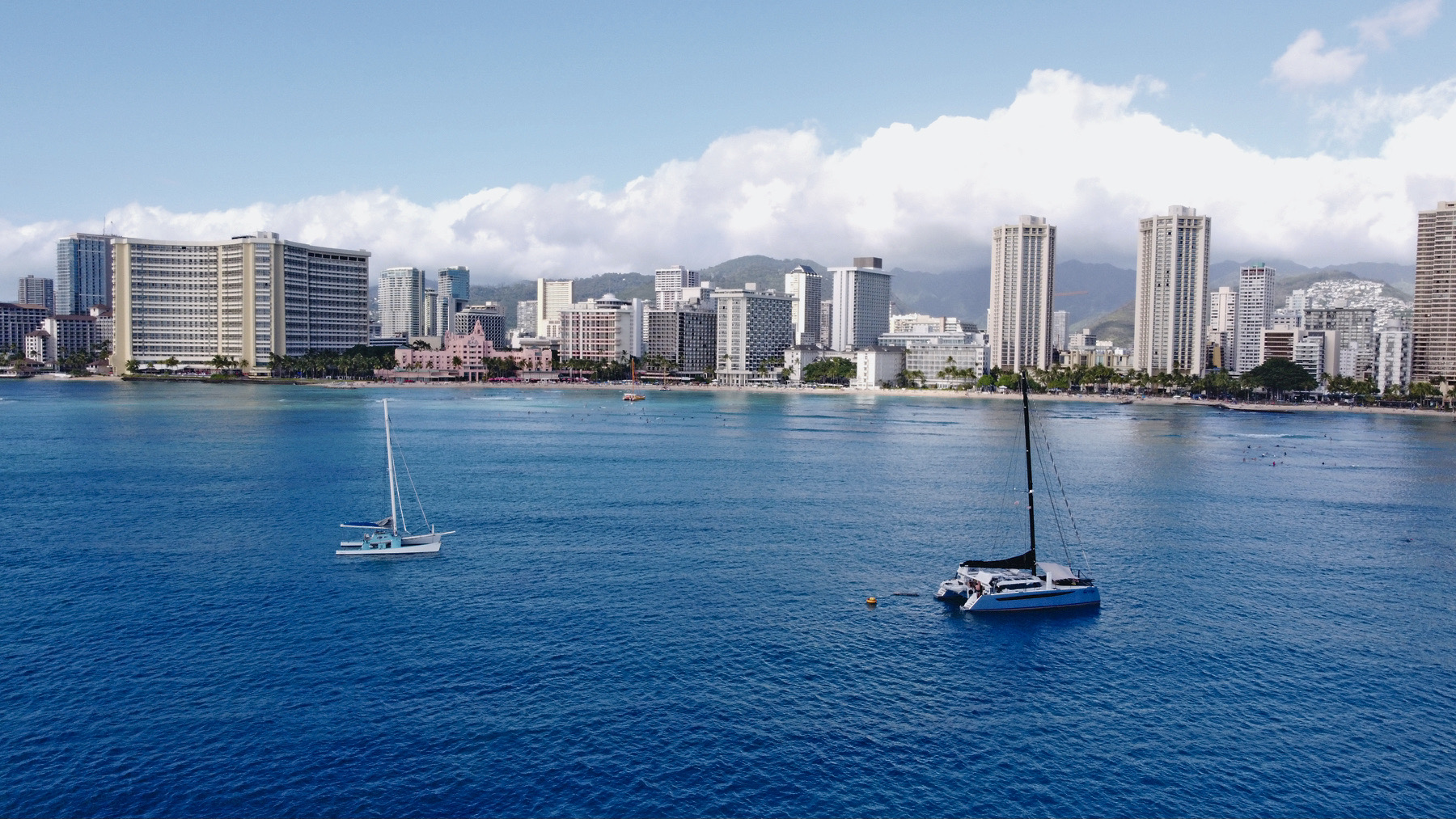
Before cruising in Hawaii, sailors should be aware that the state charges a daily fee for anchoring if you stay in one place for more than three days. Sailing throughout the Caribbean, the Bahamas, the East Coast and Mexico, we never paid an anchoring fee. However, Hawaii’s Department of Land and Natural Resources (DLNR) requires boaters to obtain a permit to anchor for more than 72 hours in one spot. In addition, each bay requires a unique permit; the permits are not issued ‘per island.’ This leaves cruisers with the option of upping anchor often, or spending time and money for permits. The daily fee for anchoring a 45- to 60- ft boat is $18 plus $10 for each person who sleeps on the boat. This can quickly become as expensive as staying in a marina!
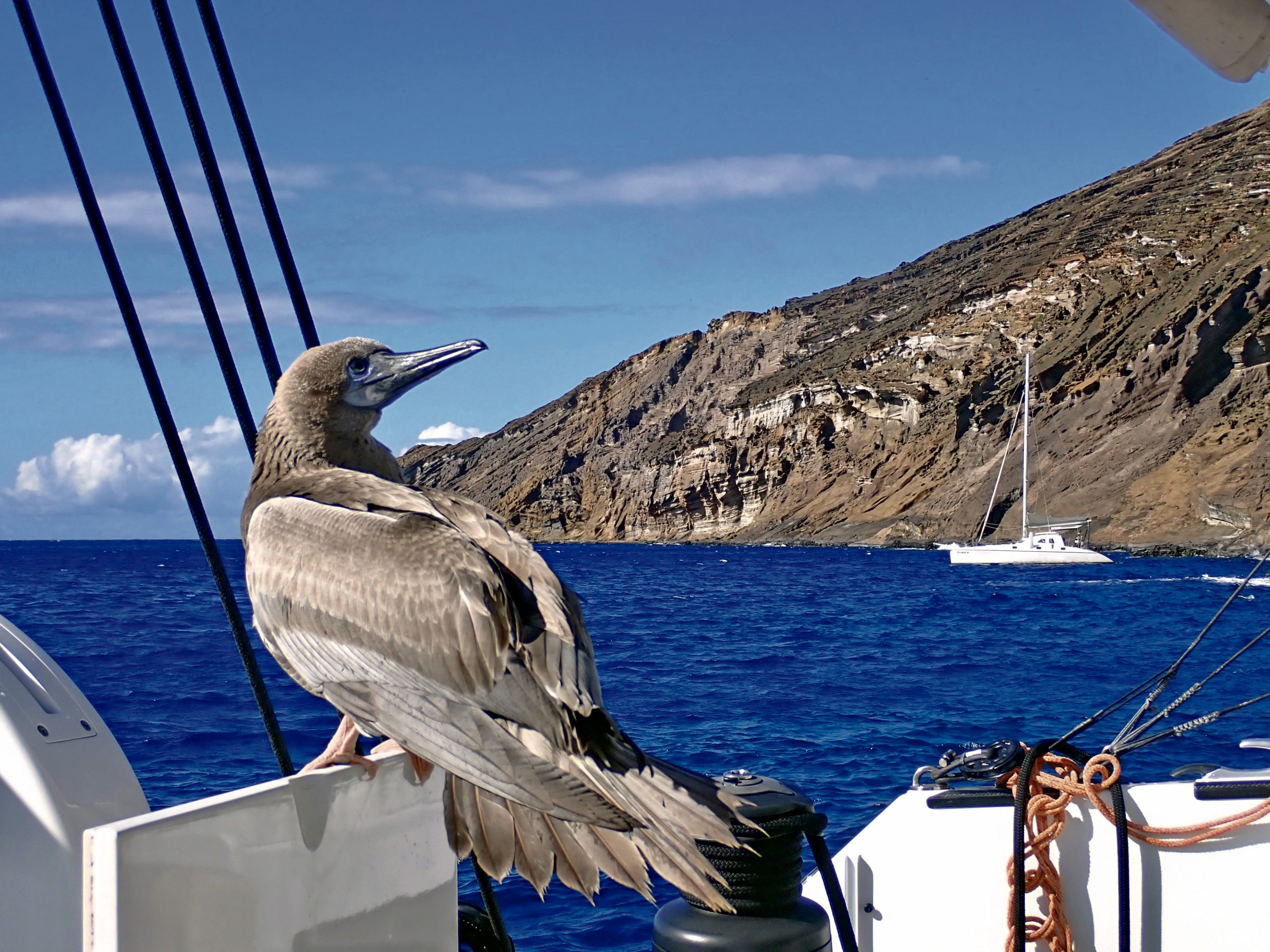
There is no doubt our Hawaiian cruising experience has been greatly influenced by the coronavirus and the lack of tourists. We have found some truly magical places to moor here. Our first long stop was in Honolua Bay, located on the northwest side of Maui.
Please continue reading in February’s Latitude 38 magazine.
Keep the Stern Light in Sight
The Resourceful Sailor hopes to inspire creative, simple, and affordable approaches to a boat’s modifications. For the sake of brevity and focus, this essay does not compare the virtues, safety concerns, and installations of liquid fuel choices. Nor does it lecture on the proper installation of electrical wiring or the legality of navigation lighting. Remember, keep your solutions safe and prudent, and have a blast.
When I purchased Sampaguita, a Pacific Seacraft Flicka 20, it came to my attention that the pushpit-mounted propane tank obstructed the stern light’s visibility. I decided a redesign was in order. The lamp, the classic Aqua Signal Series 25, was mounted on a metal plate welded to the pushpit. From the factory, with an alcohol stove as Flicka-standard equipment, this was fine. But at some point, the alcohol setup was switched out for a propane one, adding the complication of liquid petroleum gas (LPG) fuel storage. The transom was the safest and, really, the only place for it. Sampaguita‘s outboard engine is on the port side, leaving just the starboard side for the rail-mounted assembly and LPG tank. Unfortunately, it was directly in front of the stern light.
Moving the light seemed easier than relocating the tank. Raising it a foot or so should do the trick. I needed a spacer to attach to the metal plate, extending the surface beyond the pushpit tubing. Next, a pole (or something) to raise the light above the propane tank. Finally, attach and rewire the fixture.
I looked into my crate of scrap bits and found a quality piece of wood to serve as a spacer. I trimmed this to fit, drilled mounting holes, routed out a channel for the wire, and dry-fit it to the metal plate. Once satisfied, I removed and prepped it for painting. Sampaguita came with an opened quart of white enamel, so I put several coats on the wood spacer.
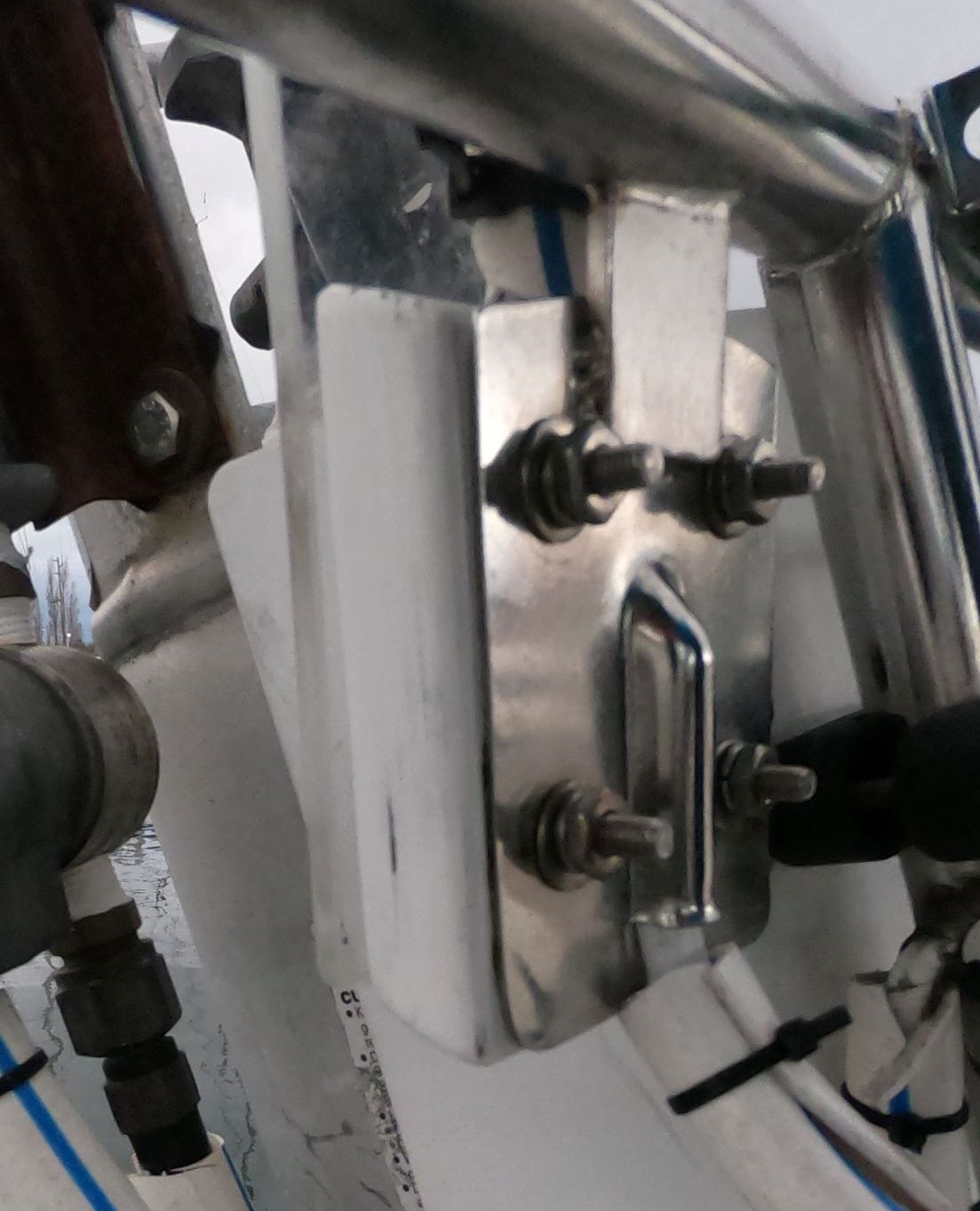
My crate of scrap also held some plexiglass. I cut a rectangular piece that would act as a pole. It would bolt to the spacer and extend up above the propane tank, with the light attached to the top. I carefully drilled the appropriate holes in both ends.
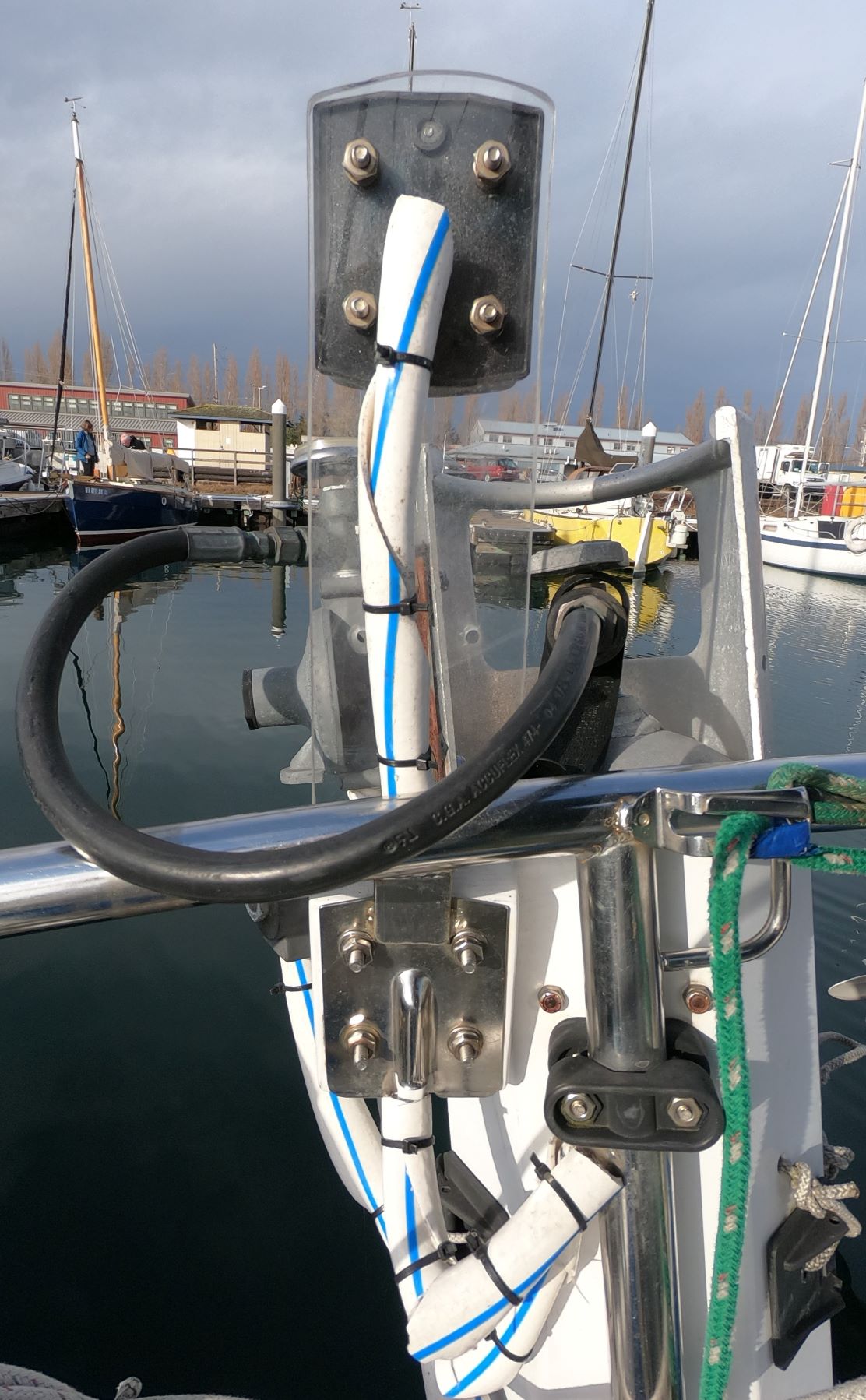
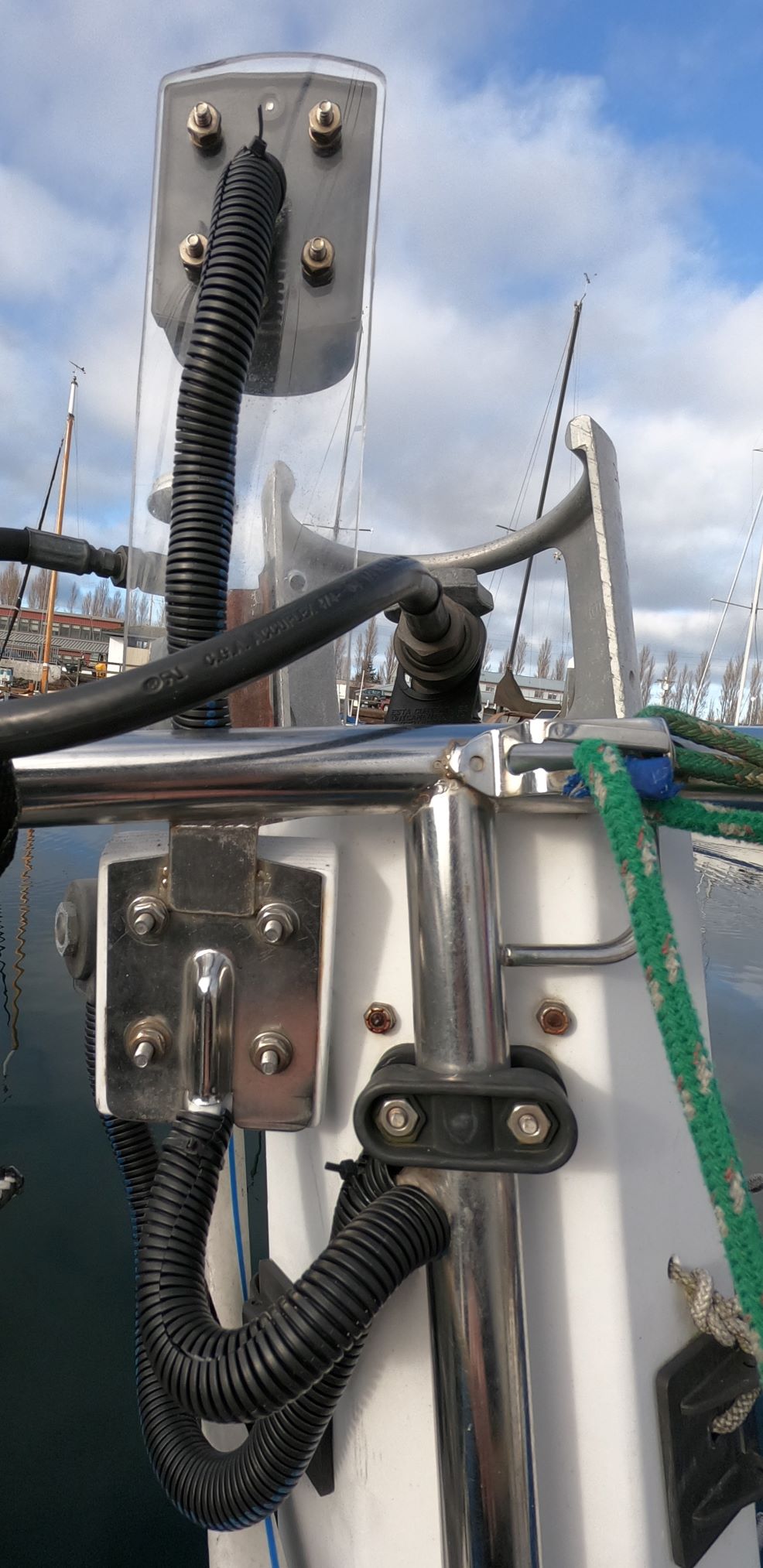
The wiring went through a hole in the plexiglass and down through the channel in the spacer. From here, the wire looped to a hole in the rail and fed belowdecks for connection.
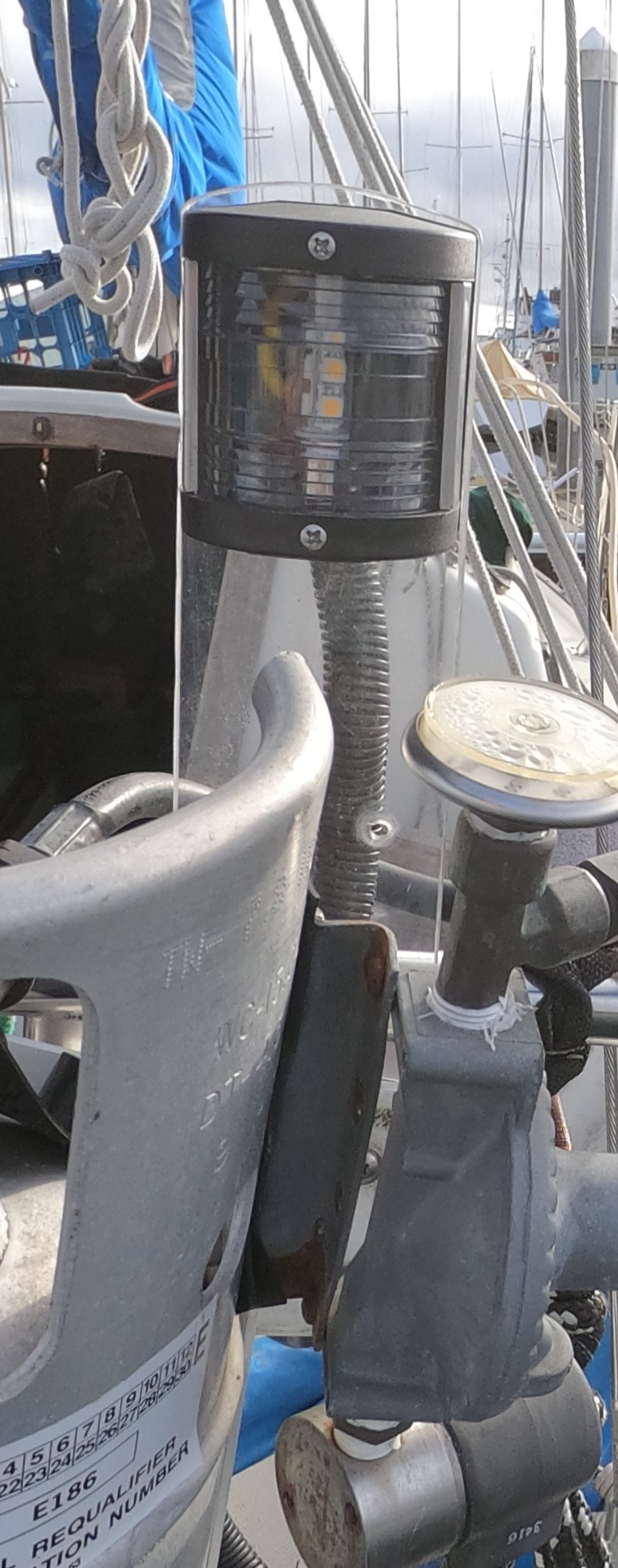
I made this modification in 2013, with a small investment in wire and some stainless-steel fasteners. The rest I had on hand. In 2018, while wiring in a propane tank solenoid along the same route to the panel, I rewired the light to correct the under-deck hodgepodge I’d inherited. I added pieces of repurposed water hose for UV protection of the wire, having since replaced that with split loom. The wood spacer is finally showing a need for a refinish. Instead, I may switch over to a piece of HDPE [high-density polyethylene]. The plexiglass has low visibility, has held up well over time, and is flexible and forgiving when I need to switch out the tank. It does have a slight illumination when the light is on. If replacement were to become necessary, I would consider it again. I have a better knowledge of how to machine it more cleanly than I did in 2013.
Discover San Francisco Bay Destinations by Sail with Modern Sailing
Was Popeye the Sailor Man Based on a Real Person?
Do you remember Popeye the Sailor Man comic strips and cartoons? In recent months we’ve noticed a circulating Facebook post that says Popeye was based on a real person. The posts link to an article in Nautica News that claims Elzie Crisler Segar’s Popeye character was modeled upon Frank “Rocky” Fiegel, a man who lived in Segar’s hometown of Chester, Illinois. The post also shows the photo below in which it’s easy to see the resemblances to Segar’s Popeye. True story? Being the skeptics that we are, we decided to spend a little time searching Google to see what we could dig up.
We typed “Popeye the Sailor Man” into Google’s search bar and were rewarded with a full page of links to animated Popeye cartoons on YouTube. Next we found numerous references to Popeye’s famous theme song — “I’m Popeye the Sailor Man, I live in a garbage …” Oops, wrong version. Again, the songs were all linked to YouTube. So far there was no other reference to Popeye’s being based on a real-life person. Until we uncovered this — an article published on the website wearethemighty.com.
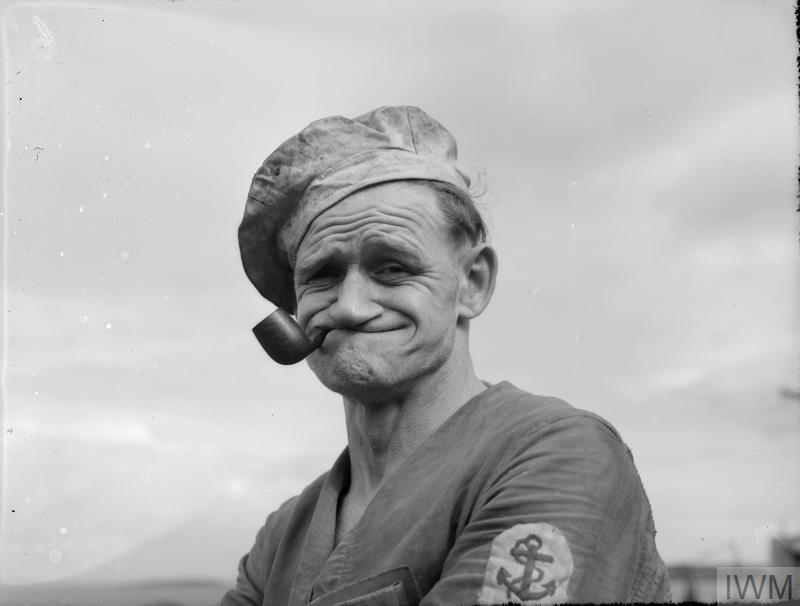
According to the article, although Segar’s town was full of characters who were excellent inspiration for his comic-strip cast, Fiegel, the person commonly associated with Popeye, was not at all a spinach-eating sailor but was actually a bartender who was more likely to toss back a few bourbons. The article goes on to say that Fiegel did resemble Popeye: “… he had the same jutting chin, … frame, and trademark pipe as his cartoon counterpart.” He was also known to often get into fist fights while, conversely, he would happily entertain the local kids with his feats of strength. But apparently, the photo that has been circulating on Facebook is that of a British sailor who is listed in the Imperial War Museum as “A Leading Stoker nicknamed ‘Popeye,’ with 21 years in service and fighting aboard the HMS Rodney in 1940.”
Now for some more facts — true or otherwise:
- There is an entire website devoted to Popeye. On this page you can learn all about Popeye’s history, and meet his fellow comic-strip crew such as Olive Oyl, Swee’Pea and Bluto. Here you can also purchase Popeye hoodies and barbershop products, and upload Popeye-themed Zoom backgrounds. Who’d have thought? As dubious as this website might sound, we’re giving it a thumbs-up for authenticity as it’s hosted by King Features Syndicate, the same group that published the original Popeye comic strips.
- One of our Latitude crew owned a Popeye Big Little Book, which said crewmember claims to have read over and over again as a youngster.
- Despite the plethora of information available on the internet and its often-questionable sources, it is indisputable that Popeye remains one of sailing’s favorite heroes — even if he’s not real.
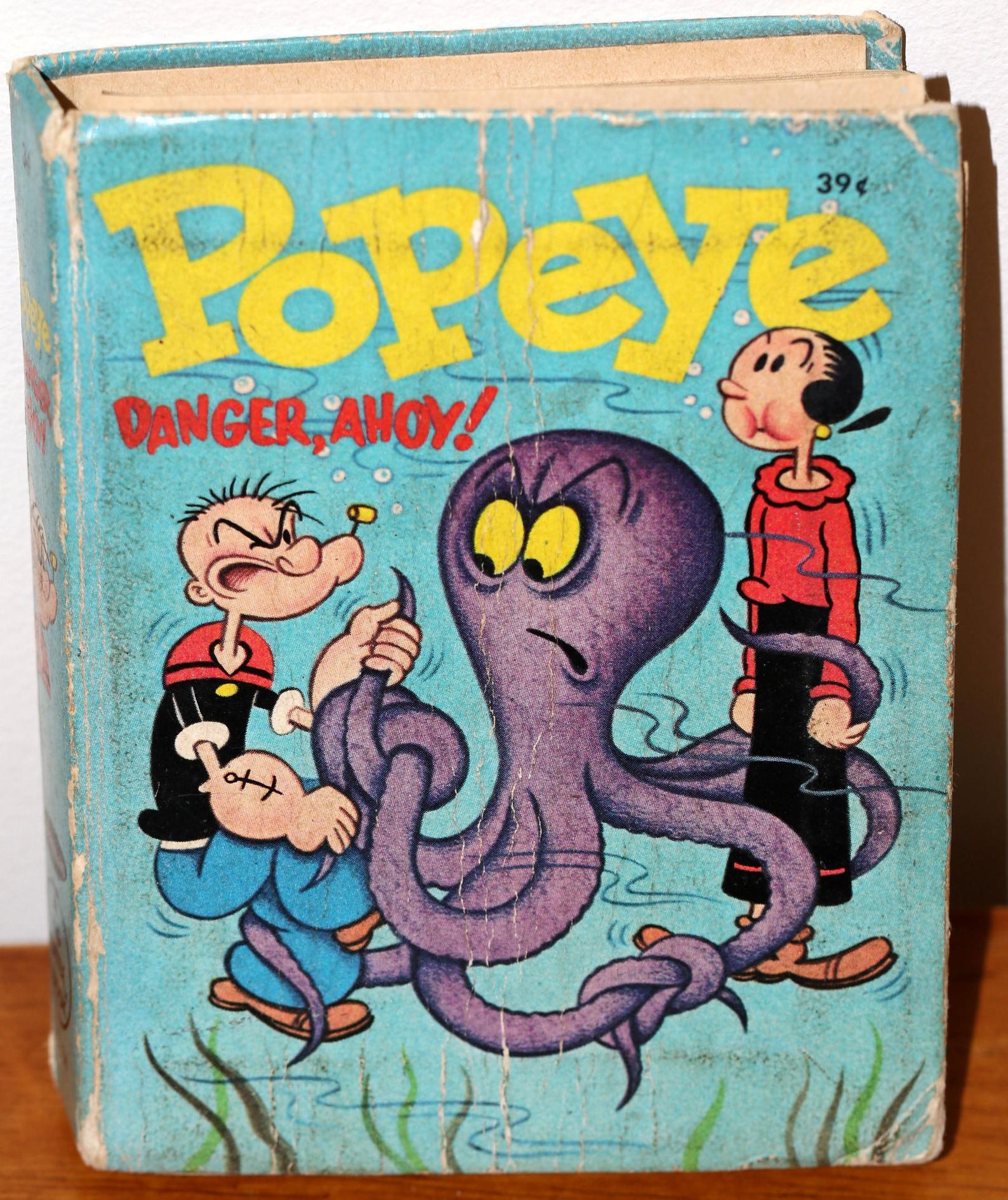
Subscribe/contribute/advertise/sail with Latitude 38 sailing magazine.
Eight Bells for Solo Sailor Hal Holbrook
Bob Rowland of Elkhart, Indiana, wrote to us: “Hal Holbrook’s obituary in the New York Times did not mention that Hal did the SSS race to Kauai in 1980.” Bob was not a competitor in that race; he was there for a delivery. “I was in Kauai to sail a boat back to San Francisco. Hal was leaving the shower building in Kauai as I entered, and he was kind enough to give me his bar of soap as I had left mine somewhere. I felt lucky to have met him, even in passing.”
As reported in the July 1980 issue of Latitude 38, Hal Holbrook sailed his Gulf 40 Yankee Tar in the PHRF 1 division. He finished after the deadline. (Also see the race report in the August 1980 issue.)
Chuck Hawley of Santa Cruz was among the skippers who sailed in that second Singlehanded Transpacific Race. “At the age of 25, I was excited to be in the same race as Hal Holbrook because he was a Hollywood star (I had grown up listening to his Mark Twain one-man show), and also because my sister Kate had been in a TV series with him after graduating from UCLA. Mr. Holbrook was such a gentleman, and was very approachable during the time we overlapped in Hanalei. He spoke fondly of Kate, although her role in The Senator was, uh, modest.”
Holbrook died at home in Beverly Hills on January 23, 2021. He was 95.

“It’s such a pleasure when people who are famous and also sail can put aside their fame and just hang out after a race or after a landfall,” continues Chuck. “Roy Disney was one of those guys, and Hasso Platner is another. I’d certainly put Hal Holbrook in the same category. I am sorry to see him go. Fair winds, Hal.”

